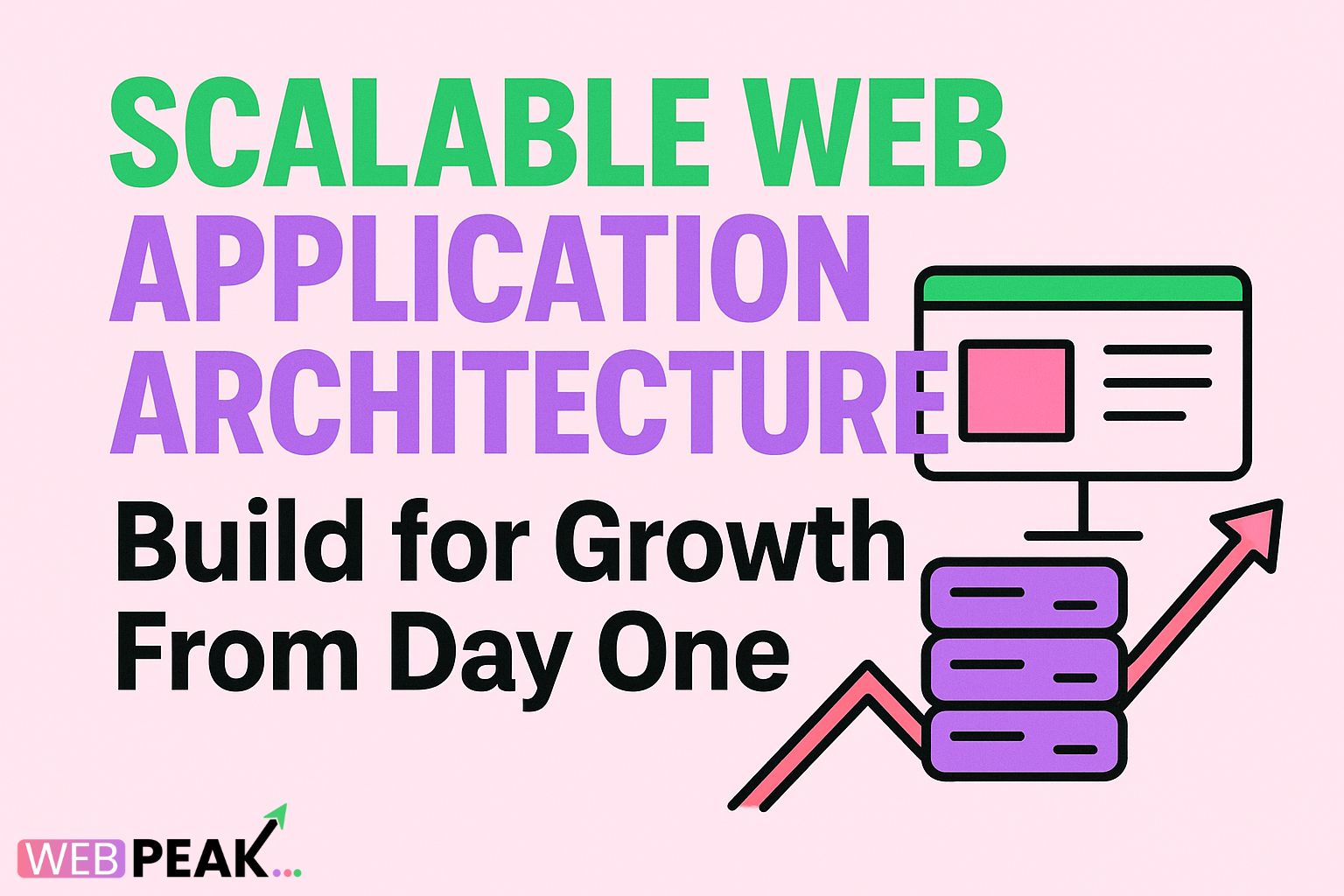Scalable Web Application Architecture: Build for Growth From Day One
In today’s digital era, businesses of all sizes must prepare their online platforms for growth. A scalable web application architecture ensures that your system can handle increasing traffic, user demands, and feature complexity without sacrificing performance. Building for growth from day one means future-proofing your application so it can evolve with your business, rather than requiring costly overhauls later. In this article, we’ll explore the principles, strategies, and best practices for designing a scalable architecture that supports long-term success.
What Is Scalable Web Application Architecture?
Scalable web application architecture refers to the design and organization of systems, services, and infrastructure that can efficiently handle growth in user base, data volume, and functionality. Scalability is the ability to adapt without degrading performance. Whether you’re running an e-commerce platform, SaaS product, or enterprise system, scalability ensures that the application remains reliable, secure, and responsive as it grows.
Why Scalability Matters for Web Applications
- Performance Under Load: Scalable architecture ensures your app doesn’t slow down when traffic spikes.
- Cost Efficiency: Proper design allows resource usage to scale efficiently with demand.
- User Experience: Consistent performance builds trust and engagement.
- Business Agility: Easily accommodate new features, integrations, and global expansion.
- Future-Proofing: Avoid expensive rebuilds by preparing your system from day one.
Key Principles of Scalable Web Application Architecture
1. Horizontal and Vertical Scaling
Scaling can be achieved in two main ways:
- Vertical Scaling: Adding more power (CPU, RAM) to existing servers.
- Horizontal Scaling: Adding more servers to distribute the load.
While vertical scaling is simpler, horizontal scaling provides greater flexibility and resilience, especially for large-scale applications.
2. Load Balancing
Load balancers distribute incoming requests across multiple servers, preventing bottlenecks. This ensures high availability and fault tolerance. Cloud providers like AWS, Azure, and GCP offer managed load-balancing services that make this easier to implement.
3. Microservices Architecture
Instead of a monolithic application, microservices break the system into smaller, independent services. This approach allows teams to scale individual components, update services without downtime, and deploy more quickly.
4. Caching Strategies
Caching frequently accessed data in memory (using tools like Redis or Memcached) reduces database load and speeds up response times. Proper caching strategy is essential for scaling read-heavy applications.
5. Database Scalability
Databases often become the bottleneck in growing applications. Techniques for scaling databases include:
- Sharding: Splitting large datasets across multiple databases.
- Replication: Creating multiple read replicas to distribute queries.
- NoSQL Databases: Using non-relational databases for high scalability.
6. Asynchronous Processing
Background jobs and message queues (e.g., RabbitMQ, Kafka, or AWS SQS) allow long-running tasks to be processed asynchronously, freeing up resources for real-time user interactions.
7. Stateless Applications
Applications should be designed to be stateless, meaning session data is stored externally (e.g., in Redis or a database). This allows requests to be routed to any server without dependency on local storage, making horizontal scaling seamless.
8. Cloud-Native Design
Cloud platforms provide auto-scaling, managed services, and distributed infrastructure. Designing your application with cloud-native principles maximizes elasticity and minimizes downtime risks.
Best Practices for Building Scalable Web Applications
Design for Failures
Systems must be resilient to failures. Redundancy, failover mechanisms, and monitoring systems ensure that downtime is minimized.
Use APIs and Service-Oriented Architecture
APIs allow integration with third-party tools and other services. Designing modular systems ensures flexibility and scalability.
Implement Continuous Integration/Continuous Deployment (CI/CD)
Automating deployment pipelines reduces errors, accelerates updates, and allows for rapid scaling of features.
Monitor and Optimize Performance
Tools like Prometheus, Grafana, and New Relic provide insights into system health and help detect performance bottlenecks before they affect users.
Adopt a Security-First Mindset
A scalable application must also be secure. Implementing best practices in authentication, data encryption, and secure coding ensures safe scalability.
SEO Checklist for Scalable Web Applications
- Mobile Optimization: Ensure responsive design for all devices.
- Page Speed: Use CDN, image optimization, and caching to improve loading times.
- Clean URLs: Use SEO-friendly, human-readable URLs.
- Metadata: Include descriptive titles, meta descriptions, and structured data.
- Content Delivery: Implement a CDN for faster content delivery across regions.
- Accessibility: Follow WCAG guidelines to make your app accessible to all users.
- Scalable Infrastructure: Ensure uptime and availability to avoid SEO penalties.
Case Study Example: Building for Growth
Consider a startup that begins with a small monolithic application hosted on a single server. As the company grows, traffic spikes during peak hours cause downtime and poor user experience. By redesigning with microservices, load balancing, caching, and a scalable database, the company can now handle thousands of concurrent users seamlessly. This demonstrates why designing a scalable web application architecture from day one saves time, money, and customer trust.
Partnering With Experts
Building a scalable application is complex and requires expertise in both development and digital growth strategies. Companies like WEBPEAK provide full-service solutions in Web Development, Digital Marketing, and SEO services. Partnering with professionals ensures that your architecture supports both technical scalability and long-term business growth.
Frequently Asked Questions (FAQ)
What is the difference between scalable and non-scalable applications?
Scalable applications can adapt to increasing traffic and demands without performance loss, while non-scalable ones degrade under pressure, often requiring costly rework.
How do I know if my web application needs to scale?
Signs include slow response times, frequent downtime, high infrastructure costs, and inability to handle user growth efficiently.
Which is better: vertical or horizontal scaling?
Vertical scaling is simpler but limited. Horizontal scaling is more flexible, resilient, and cost-effective for long-term growth.
Do microservices always improve scalability?
Not always. Microservices add complexity but provide benefits for large-scale applications that need flexibility and independent scaling of services.
What role does cloud computing play in scalability?
Cloud platforms provide elastic infrastructure, allowing applications to scale up or down automatically based on real-time demand.
How can I ensure database scalability?
Use techniques like replication, sharding, indexing, and choosing the right database type (SQL or NoSQL) depending on application needs.
Conclusion
Designing a scalable web application architecture from day one is critical for long-term success. By applying principles such as load balancing, microservices, caching, and database optimization, businesses can prepare their systems for growth without compromise. Whether you’re a startup or an enterprise, investing in scalability ensures better performance, cost efficiency, and customer satisfaction as your application evolves.





